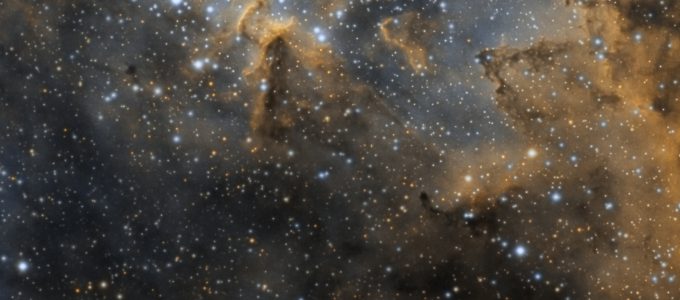Heart of the Heart Nebula (Melotte 15)
Melotte 15 is the central region of the Heart Nebula (IC 1805), some 7,500 light years away from us. Melotte 15 is a relatively small open cluster of stars some 1.5 million years old, some of them 50-times more massive

